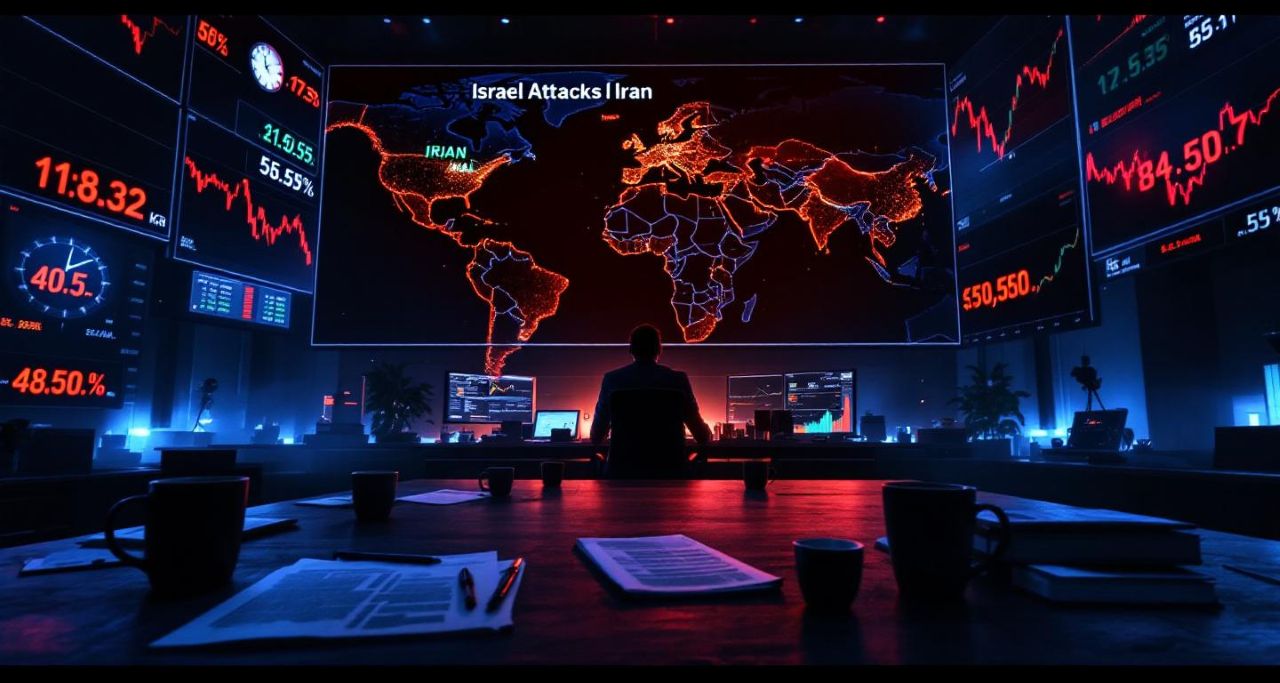
The Day the Markets Held Their Breath and the Aftermath
It wasn’t just yesterday that the world felt suddenly, unmistakably more fragile.
The unease continues today as the aftershocks of Israel’s military strike against Iran ripple through global markets. The initial news broke yesterday, targeting nuclear and military sites, and the reverberations were immediate, not just in the Middle East, but in the world’s financial capitals, where traders and policymakers are still scrambling to make sense of what comes next.
I remember yesterday, glancing at my phone before sunrise, the screen lit up with red arrows and urgent headlines. It felt eerily reminiscent of other moments when geopolitics and markets collided, think Russia’s invasion of Ukraine, or the first days of the pandemic. But this time, the stakes felt even higher, with the world’s energy arteries running straight through the heart of the conflict.
Oil Surges, Stocks Plunge: The Market’s Initial Gut Reaction and Today’s Lingering Effects
Yesterday, within hours of the Israeli strike, Brent crude oil prices spiked as much as 9%, briefly touching$78 a barrel before settling back to a still-jarring 5% gain. Today, while prices have moderated slightly, they remain elevated, a persistent signal that the world’s energy supply is in question. The Strait of Hormuz, through which a third of the world’s seaborne oil passes, sits right on Iran’s doorstep. Any hint of disruption there sends shivers through every boardroom and gas station from Shanghai to Chicago.
Stock markets, meanwhile, did what they always do in the face of uncertainty: they sold off yesterday. Asian indices tumbled, European shares opened sharply lower, and the S&P 500 took a hit in New York. Today, markets are attempting to stabilize, but the underlying anxiety remains palpable. Investors, always quick to seek shelter, piled into gold and U.S. Treasuries yesterday, classic safe havens in times of crisis. The message was clear: risk was out, caution was in.
Why This Conflict Hits So Hard and Continues to Resonate
The Israel-Iran conflict isn’t just another regional flare-up. Iran is one of the world’s top oil producers, and its exports, mostly to China, are a lifeline for its economy. If those flows are interrupted, or if Iran retaliates by threatening the Strait of Hormuz, the consequences could be global. China, for its part, has built up a strategic oil reserve, but even that would only cushion the blow for a few weeks. Europe, too, is exposed, having leaned more heavily on Middle Eastern oil since the Ukraine war upended Russian supplies.
There’s also the psychological impact. Markets hate uncertainty, and this strike introduced a whole new level of unpredictability yesterday. Today, that uncertainty lingers. Will Iran retaliate? Will the U.S. be drawn in? Could oil prices spike even higher, stoking inflation just as central banks were hoping to declare victory over rising prices? These are the questions that kept traders, and frankly, the rest of us, up last night, and continue to weigh on sentiment today.
Winners, Losers, and the Lessons of History Playing Out in Real Time
Not every sector suffers equally in a crisis like this. Energy giants like ExxonMobil and Chevron, for example, often see their shares rise as oil prices climb. But for most companies, especially those reliant on global supply chains or sensitive to fuel costs, think FedEx, UPS, airlines, the pain is real and immediate. Higher oil means higher costs, and that ripples through everything from shipping to groceries.
If there’s a silver lining, it’s that markets have a remarkable ability to recover from geopolitical shocks. After Russia invaded Ukraine in 2022, the S&P 500 plunged more than 7%, but clawed its way back within a month, even as oil stayed high. The key, as always, is whether the conflict remains contained or spirals into something bigger. Today, we’re watching to see if that historical pattern will hold.
A Personal Take: The Human Side of the Numbers Yesterday and Today
I’ve covered enough market panics to know that behind every red arrow is a real person, someone worried about their retirement, their job, or just how much it’ll cost to fill up the tank next week. Yesterday, I called a friend who works in logistics. “It’s déjà vu all over again,” he sighed, recalling the supply chain chaos of recent years. “We’re bracing for delays, higher costs, and a lot of uncertainty.”
That’s the reality for millions right now. The headlines may focus on oil and stocks, but the true impact will be felt in everyday decisions, from the price of bread to the cost of a summer road trip. And that impact, set in motion yesterday, continues to be felt today.
What Comes Next? The Waiting Game Continues
As the world waits for Iran’s response, the markets remain on edge. History suggests that after the initial shock, cooler heads may prevail. But with so much at stake, energy, security, and the fragile post-pandemic recovery, no one is taking anything for granted.
For now, the only certainty is uncertainty. And in the markets, that’s always a dangerous place to be. The events of yesterday have set the stage, and today we’re all waiting to see how the drama unfolds.
